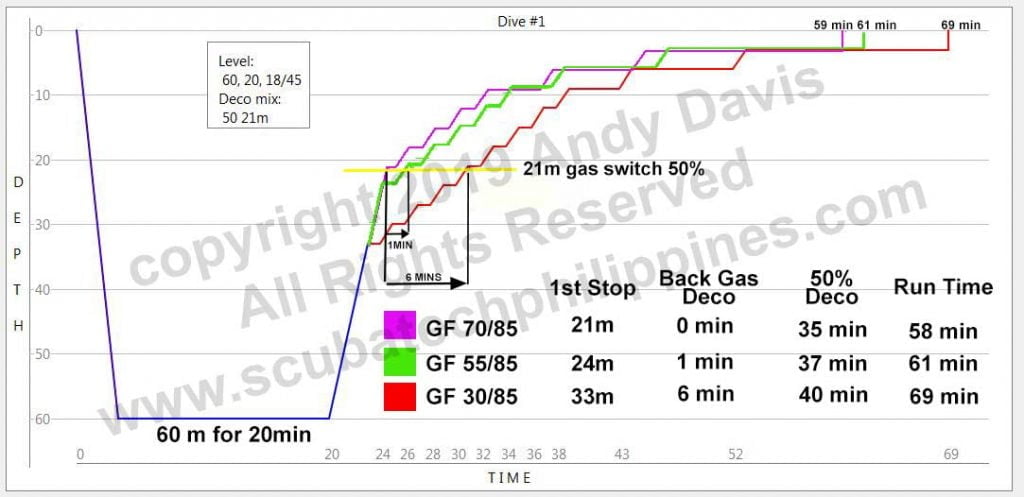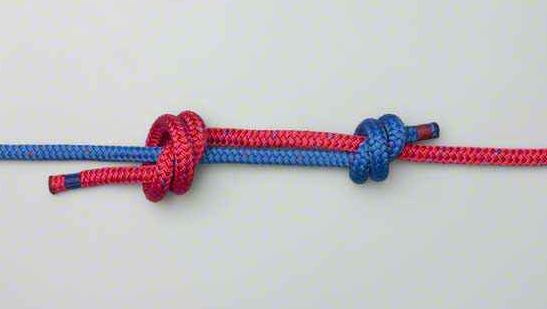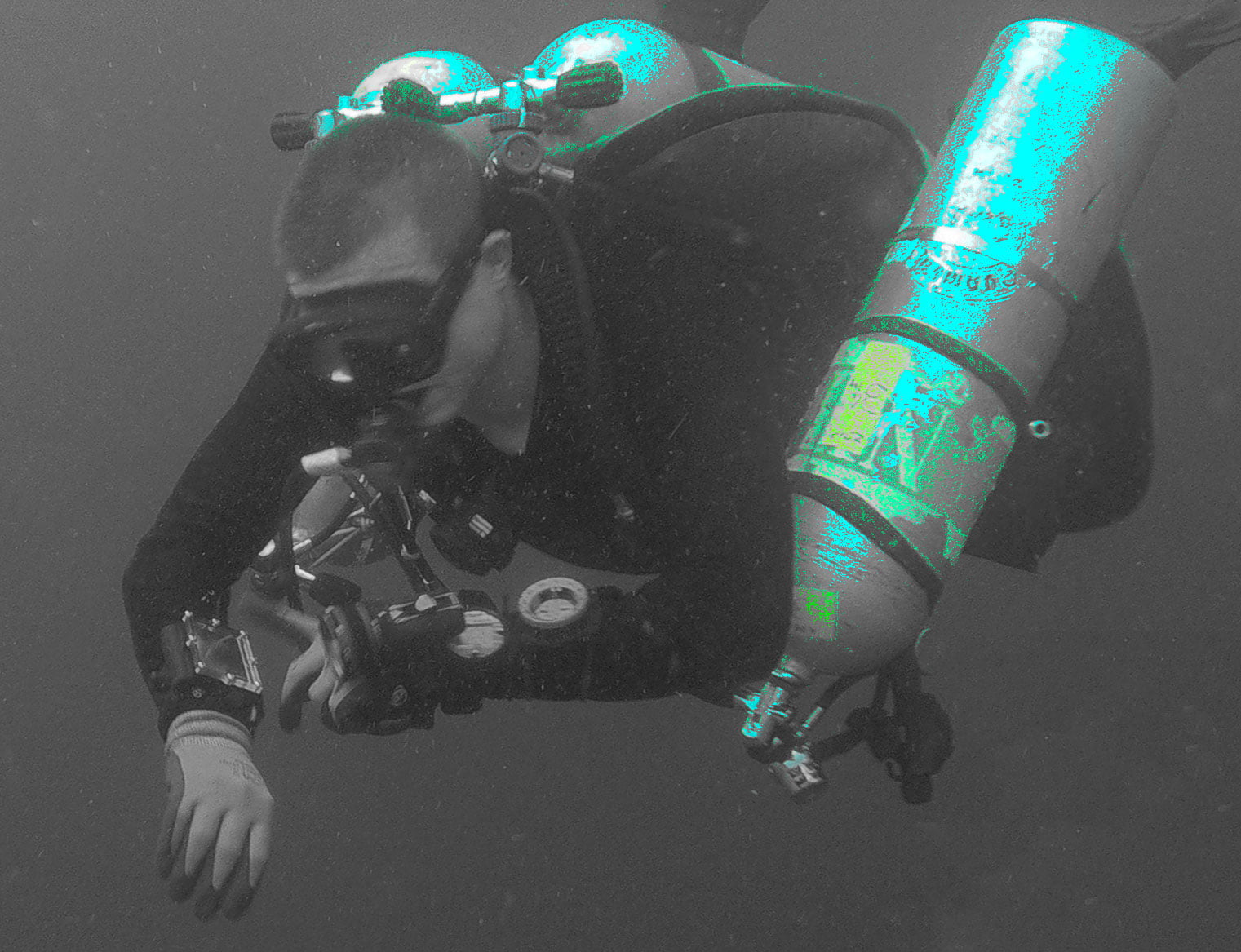Technical Diving Skills – Reaching Your Valves
This article, originally posted at DiveDIR by Garf, gives great advice on how to reach your valves when conducting valve shutdown procedures. It’s the most comprehensive analysis of this key skill attribute that I’ve read to date. They call it the ‘ultimate guide’… it is!
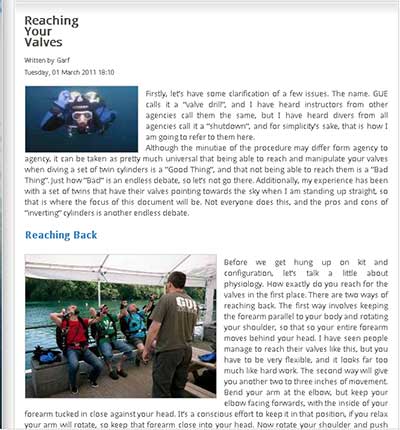
Original Link (now dead): http://www.divedir.com/Drills-and-Skills/valve-drills-the-ultimate-guide.html
Reaching Your Valves
Firstly, let’s have some clarification of a few issues. The name. GUE calls it a “valve drill”, and I have heard instructors from other agencies call them the same, but I have heard divers from all agencies call it a “shutdown”, and for simplicity’s sake, that is how I am going to refer to them here.
Although the minutiae of the procedure may differ from agency to agency, it can be taken as pretty much universal that being able to reach and manipulate your valves when diving a set of twin cylinders is a “Good Thing”, and that not being able to reach them is a “Bad Thing”.
Just how “Bad” is an endless debate, so let’s not go there. Additionally, my experience has been with a set of twins that have their valves pointing towards the sky when I am standing up straight, so that is where the focus of this document will be. Not everyone does this, and the pros and cons of “inverting” cylinders are another endless debate.
The Body Mechanics of Reaching The Valves
Before we get hung up on kit and configuration, let’s talk a little about physiology. How exactly do you reach for the valves in the first place? There are two ways of reaching back. The first way involves keeping the forearm parallel to your body and rotating your shoulder so that so your entire forearm moves behind your head. I have seen people manage to reach their valves like this, but you have to be very flexible, and it looks far too much like hard work.
The second way will give you another two to three inches of movement. Bend your arm at the elbow, but keep your elbow facing forward, with the inside of your forearm tucked in close against your head. It’s a conscious effort to keep it in that position, if you relax your arm will rotate, so keep that forearm close to your head.
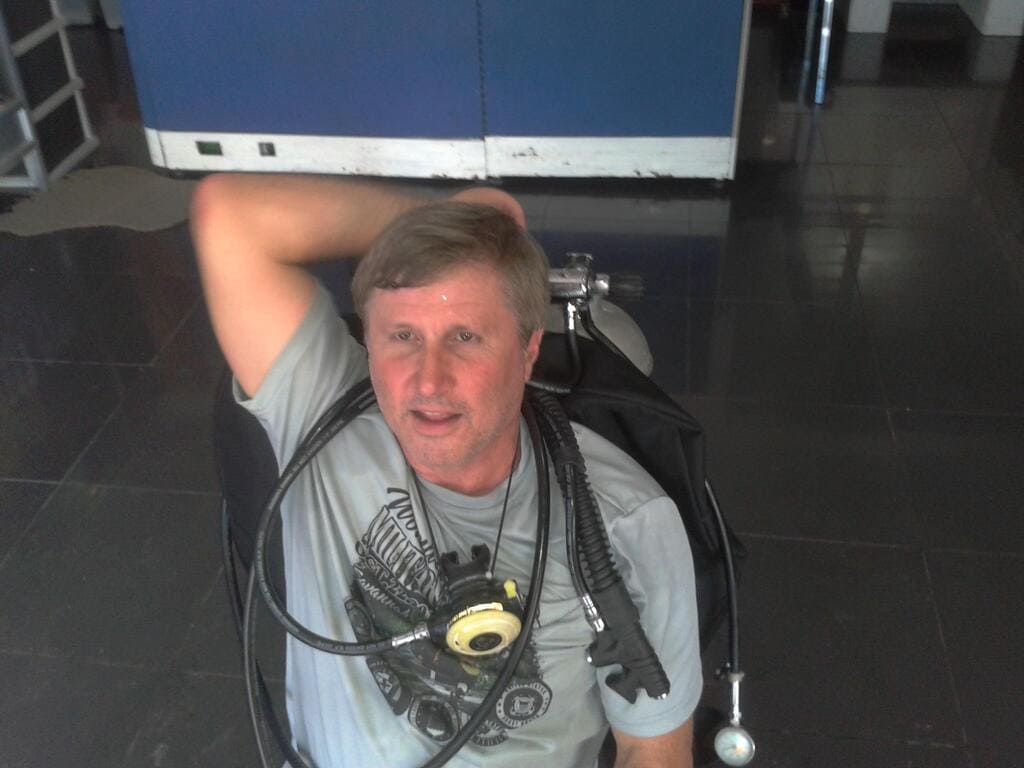
Now rotate your shoulder and push that arm back so that you can still see your elbow, but your lower arm and hand have disappeared past your head. This is a much better position to be in and gives you more flexibility. It is also a position that can be extended by training and exercise, which I will discuss later.
Reaching back for the isolator with the right hand is almost identical, except there is a little trick to it reach back, as in option 2, above, but this time bend your hand 90 degrees up at the wrist and then put the inside of your wrist against the back of your head.
Now push back with your head. Your hand should just land on the isolator. Reaching for the left-hand post is the same as the right-hand post but with the left hand. However, this is the valve that causes most people problems simply because they have less flexibility in their left shoulder than they do in the right. This can be helped with specific exercises, which I will document later.
Now we know how to reach back, we need to make sure everything is set up to allow you to stand a chance of getting there. Tip number one is to put your kit how you want it and leave it alone. It doesn’t really matter if that configuration is DIR, DIFF, DILLIGAF, or whatever, but once you have your kit setup correctly, leave it alone and start diving it, because you need a few dives with each configuration before you know what’s what.
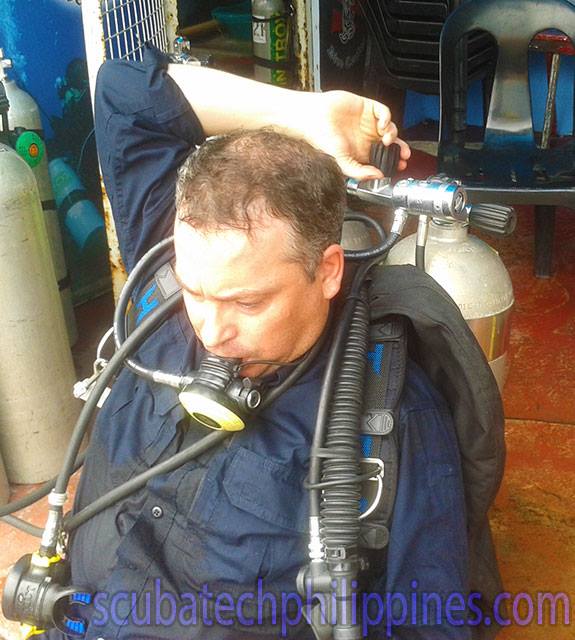
Changing things every dive will just leave you in an endless circle of adjustment. The configuration below works for me. If you want to do it another way, knock yourself out. If you do not have your harness, backplate and twins set up correctly, then it really doesn’t matter if you are Mr. Stretch, Captain Spaghetti, or the incredible bendy woman, you are not going to get to those valves.
Now “correctly”, in this article, refers to how I’ve finally ended up with my twinset configured. This is “correct” for me. The combination of the elements I describe allows me to reach the valves. Please don’t whinge at me if you don’t happen to like having your rig the same way, I’m trying to be helpful here!
Twinset Cylinder Band Positioning
Let’s start with the twinset. I really have lost count of the number of divers I see moving twinset bands up and down their cylinders whilst at dive sites, in attempts to reach their valves, totally forgetting about what this will do to their trim etc. I was that diver for a few months so I certainly cannot claim I haven’t been there myself.
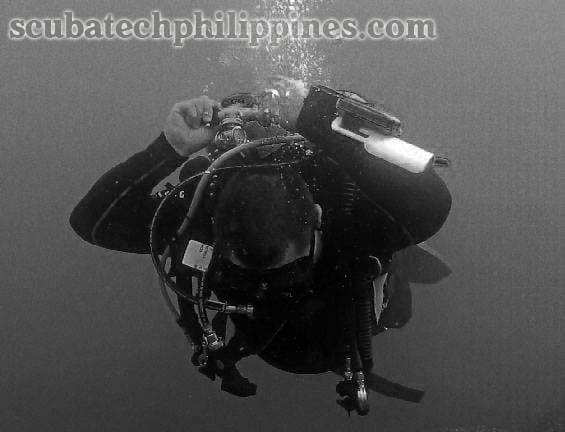
Move the bands to just below, and I really do mean just below, the neck of the cylinders. Then leave them alone. Really. It’s a seemingly common belief that moving the bands down a cylinder will move the valves closer to your hands. Let’s think about that.
Your twinset is a straight line, but your back is a curve. Moving the bands of the cylinders down therefore moves them up in relation to your back, but actually moves them further away. The closest they will get to your back will be if you set up your cylinders as in Image 3. I spent ages mucking about until someone physically demonstrated that one to me.
About The Author

Andy Davis is a RAID, PADI TecRec, ANDI, BSAC, and SSI-qualified independent technical diving instructor who specializes in teaching sidemount, trimix, and advanced wreck diving courses.
Currently residing in Subic Bay, Philippines; he has amassed more than 10,000 open-circuit and CCR dives over three decades of challenging diving across the globe.
Andy has published numerous diving magazine articles and designed advanced certification courses for several dive training agencies, He regularly tests and reviews new dive gear for scuba equipment manufacturers. Andy is currently writing a series of advanced diving books and creating a range of tech diving clothing and accessories.
Prior to becoming a professional technical diving educator in 2006, Andy was a commissioned officer in the Royal Air Force and has served in Iraq, Afghanistan, Belize, and Cyprus.
In 2023, Andy was named in the “Who’s Who of Sidemount” list by GUE InDepth Magazine.
Purchase my exclusive diving ebooks!
Read more….
Originally posted 2018-11-05 06:10:54.







